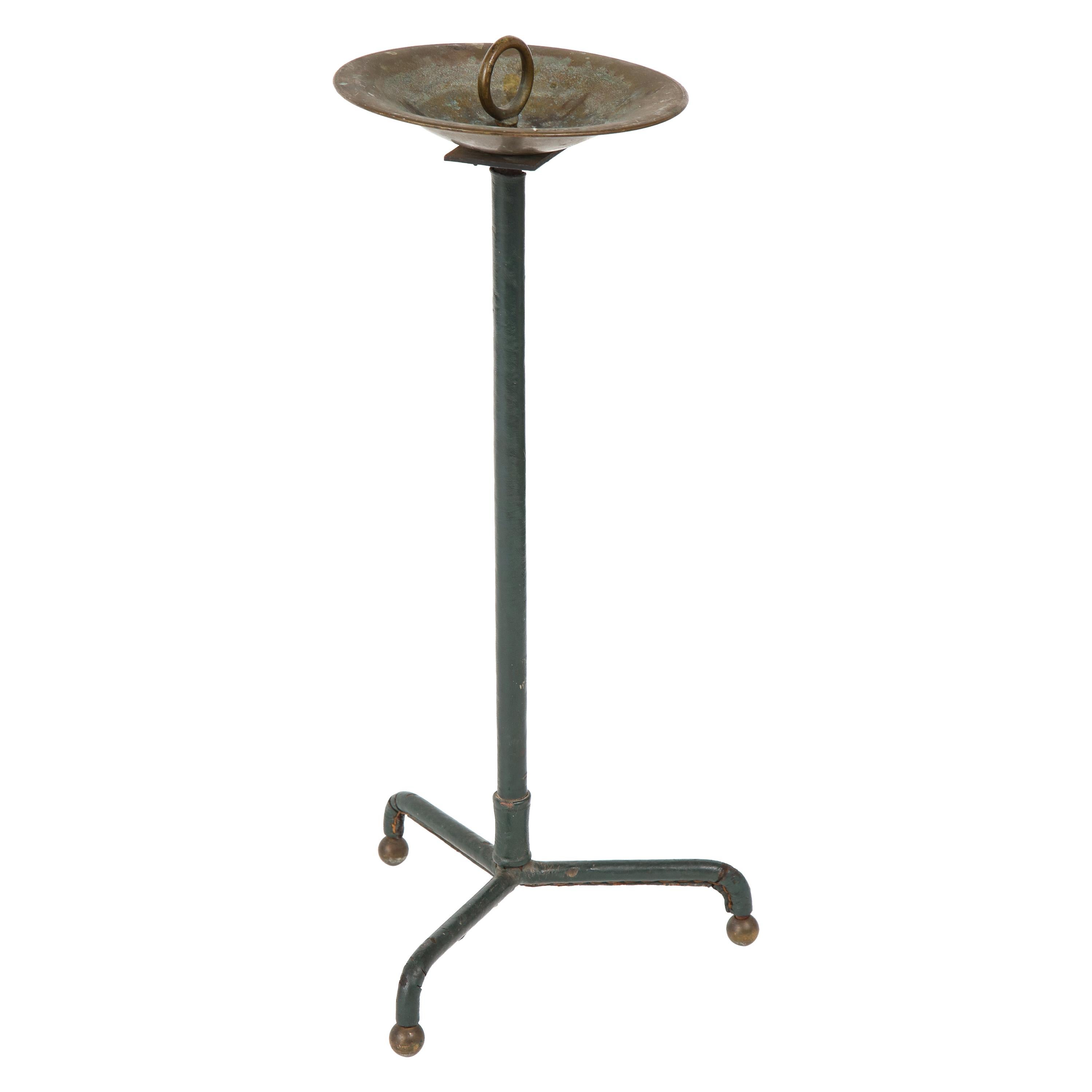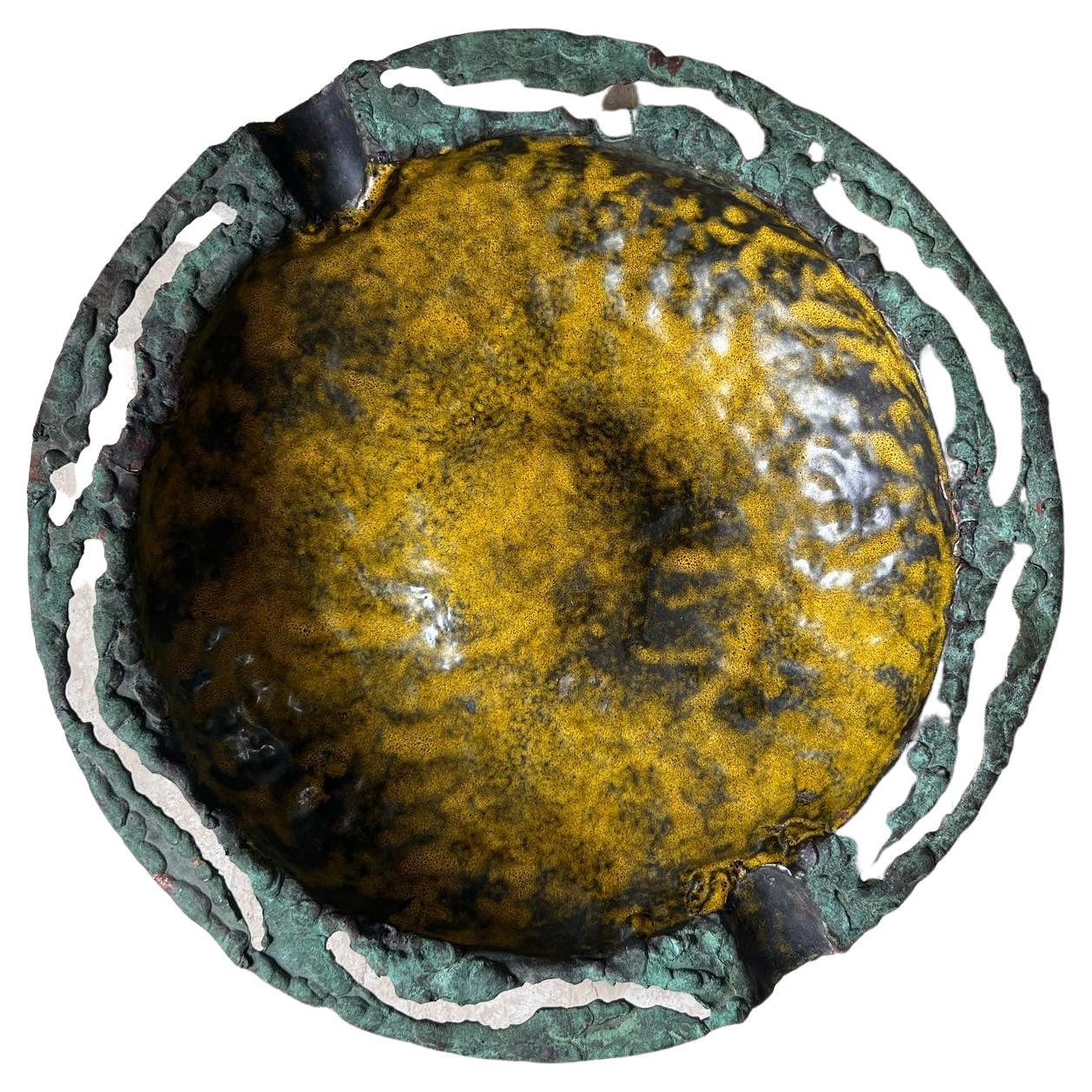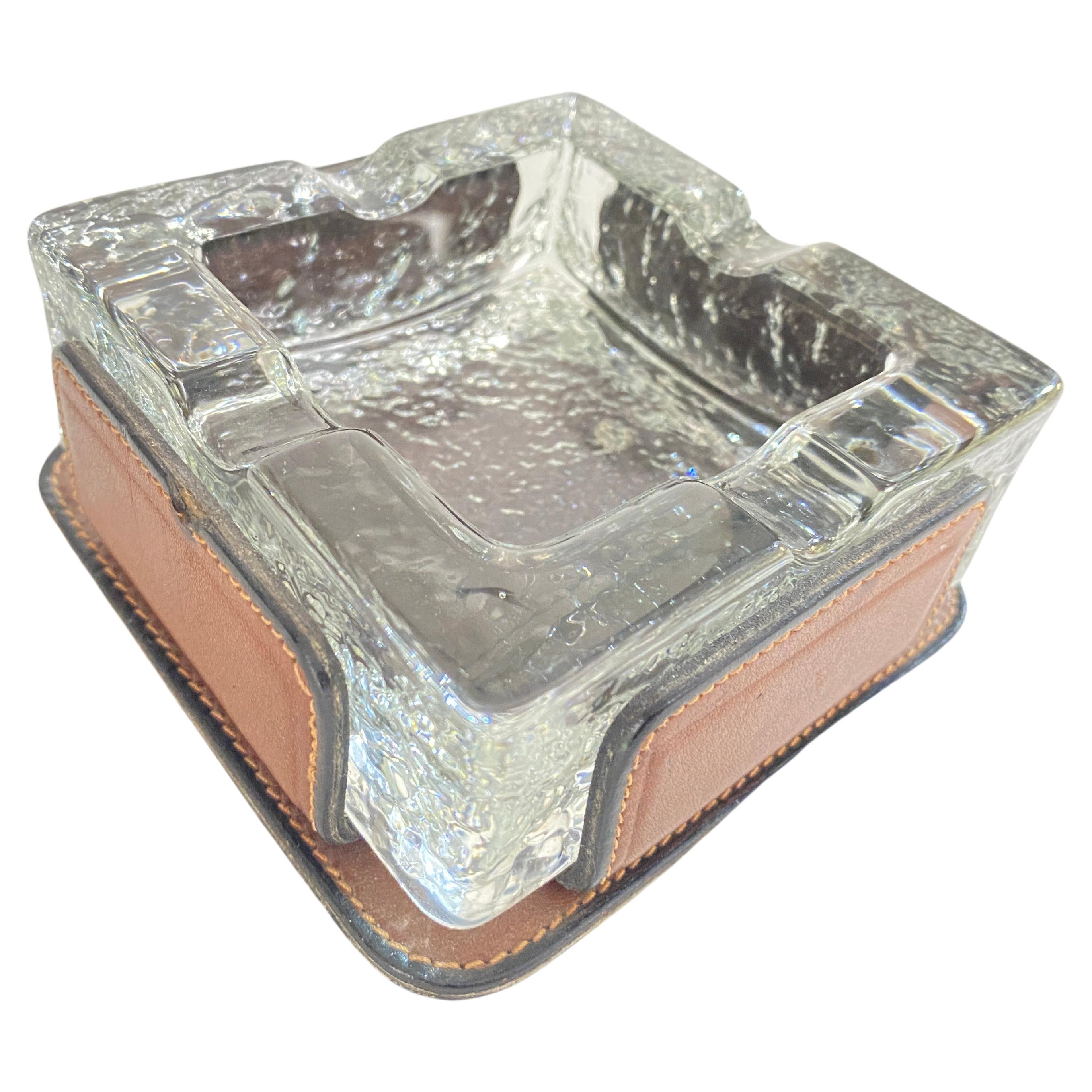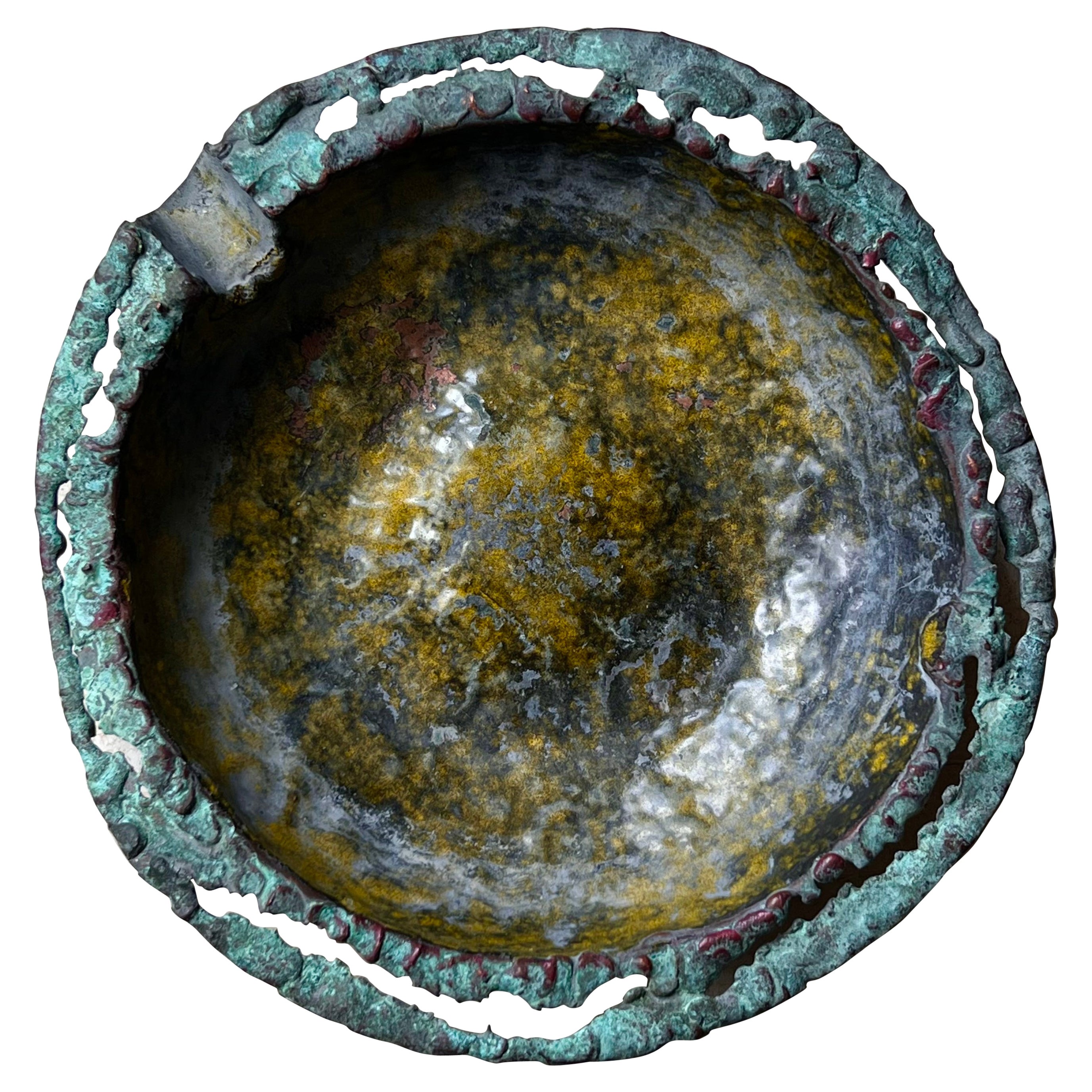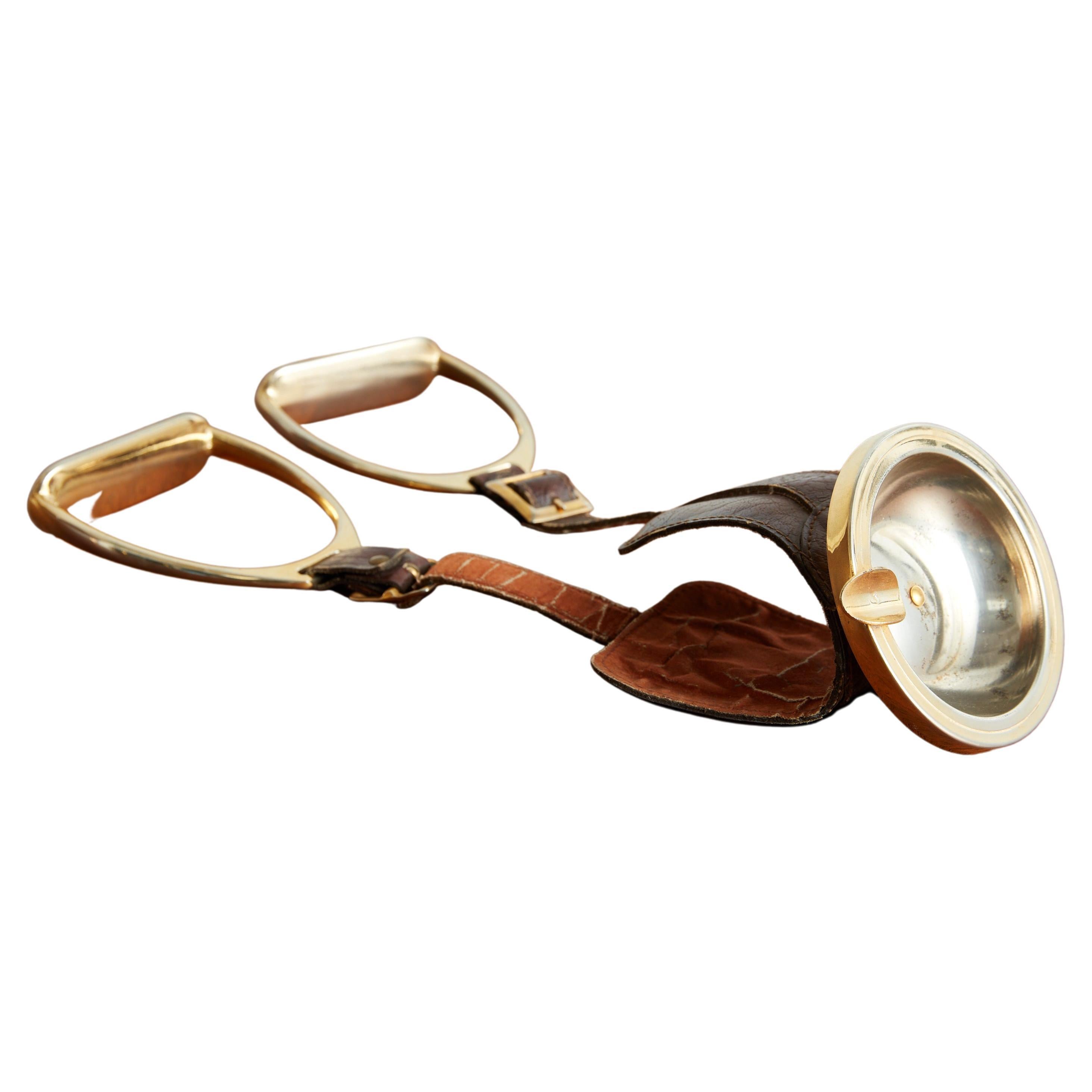Items Similar to 1950's Stitched leather Ashtray by Paul Dupré-Lafon for Maison Hermès
Want more images or videos?
Request additional images or videos from the seller
1 of 9
1950's Stitched leather Ashtray by Paul Dupré-Lafon for Maison Hermès
About the Item
1950's Stitched leather ashtray designed for maison Hermès by Paul Dupré-Lafon
- Creator:Paul Dupré-Lafon (Artist)
- Dimensions:Height: 6.3 in (16 cm)Width: 6.3 in (16 cm)Depth: 1.19 in (3 cm)
- Materials and Techniques:
- Place of Origin:
- Period:
- Date of Manufacture:1950's
- Condition:Wear consistent with age and use.
- Seller Location:New York, NY
- Reference Number:1stDibs: LU907035963902
About the Seller
1.0
Vetted Seller
These experienced sellers undergo a comprehensive evaluation by our team of in-house experts.
Established in 1996
1stDibs seller since 2011
76 sales on 1stDibs
- ShippingRetrieving quote...Ships From: New York, NY
- Return PolicyThis item cannot be returned.
More From This SellerView All
- Pair of 1950's Inkwells by Paul Dupre-Lafon for HermèsBy Paul Dupré-LafonLocated in New York, NYPair of 1950's Stitched leather inkwells Crystal by Baccarat Designed by Paul Dupre-Lafon for HermèsCategory
Vintage 1950s French Inkwells
MaterialsCrystal
- 1950s Ashtray in Stitched Leather by Jacques AdnetBy Jacques AdnetLocated in New York, NY1950s ashtray France.Category
Vintage 1950s French Ashtrays
MaterialsBrass
- 1950's Stitched leather clock in the style of HermesBy HermèsLocated in New York, NYVery nice stitched leather desk clock in the style of Paul Dupre-Lafon France Rare piece, great quality Don't know if it's workCategory
Vintage 1950s French Table Clocks and Desk Clocks
MaterialsLeather
- 1950's Stitched leather sconces by Jacques AdnetBy Jacques AdnetLocated in New York, NYVery nice pair of stitched leather wall lights by Jacques Adnet France Re-wired for E27 bulbsCategory
Vintage 1950s European Wall Lights and Sconces
MaterialsBrass
- 1950's Stitched leather andirons by Jacques AdnetBy Jacques AdnetLocated in New York, NYRare pair of 1950's Stitched leather and bronze andirons By Jacques AdnetCategory
Vintage 1950s European Andirons
MaterialsBronze, Metal
- 1950's Stitched leather mirror by Jacques AdnetBy Jacques AdnetLocated in New York, NY1950's Stitched leather mirror with brass " bamboo" part by Jacques AdnetCategory
Vintage 1950s French Wall Mirrors
MaterialsBrass
You May Also Like
- Monumental Brutalist Ashtray by Marcello Fantoni for Raymor, 1950sBy Marcello Fantoni, RaymorLocated in View Park, CAA green glow: monumental vintage Italian brutalist hand-worked metal ashtray by Marcello Fantoni for Raymor, made in Italy circa 1950. Patinated copper in tones of chartreuse, teal, and pewter. Born in Florence in 1915, Marcello Fantoni wed ancient Italian pottery technique with decidedly Modernist elements, garnering tremendous acclaim both at home and abroad - his work has been collected by important museums worldwide. When Fantoni died in Florence in 2011 at the age of 95, his obituary in the Italian newspaper La Nazione hailed him “the master of beauty.” This stunning piece certainly justifies the moniker. With the signature etched on verso, it is without doubt an heirloom rarity for the savvy collector...Category
Mid-20th Century Italian Brutalist Ashtrays
MaterialsCopper
- Paul Evans Ashtray SetBy Paul EvansLocated in Georges Mills, NHPaul Evans smoking set constructed from cuban mahogany and inlayed pewter, with removable pewter cap. Inset petwer plug in base reads 'Designers Inc Paul Evans'.Category
Vintage 1960s American Mid-Century Modern Ashtrays
MaterialsMahogany
- Ashtray in Glass with a Stitched Leather Cover, Brown Color, France 1970Located in Auribeau sur Siagne, FRThis ashtray has a stitched leather cover, in a brown color. The glass is in a good quality. It has been made in france in the 1970.Category
Vintage 1970s French Mid-Century Modern Ashtrays
MaterialsLeather, Glass
- Brutalist Metal Ashtray by Marcello Fantoni for Raymor, circa 1950By Raymor, Marcello FantoniLocated in View Park, CAA vintage Italian Brutalist hand-worked metal ashtray by Marcello Fantoni for Raymor, made in Italy circa 1950. Patinated copper in tones of chartreuse, turquoise, and pewter. Born in Florence in 1915, Marcello Fantoni wed ancient Italian pottery technique with decidedly Modernist elements, garnering tremendous acclaim both at home and abroad - his work has been collected by important museums worldwide. When Fantoni died in Florence in 2011 at the age of 95, his obituary in the Italian newspaper...Category
Mid-20th Century Italian Brutalist Ashtrays
MaterialsMetal, Copper
- Hermes Style Arm AshtrayLocated in Beverly Hills, CAEquestrian influenced leather ashtray with brass - Rests on the arm of any chair France, 1950s.Category
Vintage 1940s French Ashtrays
MaterialsBrass
- Ashtray Crystal, 1950Located in Ciudad Autónoma Buenos Aires, CCrystal We have specialized in the sale of Art Deco and Art Nouveau and Vintage styles since 1982. Why are there so many antiques in Argentina? In the 1880 – 1940 there was a grate wave of immigration encouraged by the periods of war that were taking place. 1st World War took place between 1914 and 1918 2nd World War took place between 1939 and 1945 The immigrants options were New York or Buenos Aires. Tickets were cheap and in Buenos Aires they were welcomed with open arms, as it was a country where everything was still to be done. Argentina was the country of new opportunities, labour was needed and religious freedom was assured, in many cases the of the family travel first until they were settled and then the rest of the family members join them. In the immigrant museum “Ellis Island Immigrant Building” in New York you can se the promotional posters of the boats that would take them to a new life. Between the years 1895 and 1896, Argentina had the highest DGP (gross domestic product) per capita in the world according to the Maddison Historical Statistics index, this situation arose due to the large amount of food being exported to European countries, which were at war. The Argentinean ships left the port of Buenos Aires with food, but they returned with furniture, clothes and construction elements, (it´s common to see this the old buildings of the historic neighbourhood of San Telmo, the beams with the inscription “Made in England)”, as well as many markets that were built in Buenos Aires, such us the San Telmo Market, whose structure was brought by ship and afterwards assembled in 900 Defensa Street. With the great influence of European immigrants living in the country, the children of the upper classes travelled to study in France, resulting in the inauguration of “La Maison Argentinienne”, on 27th of June 1928, in the international city of Paris, which hosted many Argentinians that were studying in Frace. It´s the fourth house to be built after France, Canada and Belgium, being the first Spanish-speaking one. Still in place today (17 Bd Jourdan, 75014, Paris, France). Many of the children of these wealthy families who attended international art exhibitions, museums and art courses abroad, took a keen interest in the European style. This is why Buenos Aires was at the time referred as “The Paris of South America”. Between the years 1890 and 1920 more than a hundred Palaces were built on Alvear Avenue the most exclusive avenue in Buenos Aires. Today some of these palaces have been transformed into museums, hotels and embassies. In the year 1936, the Kavanagh building was inaugurated, it was the tallest reinforced concrete building in South America. During 1994 the American Society of Civil Engineers distinguished it as an “international engineering milestone”, and it´s now considered a World Heritage of Modern Architecture. At the time was common to hire foreign architects such as Le Corbusier, who visited Buenos Aires/Argentina in 1929 and in 1948 he drew up the blueprints for a house built in La Plata City (which was declared a World Heritage Site). In 1947, the Hungarian architect Marcelo Breuer designed “Parador Ariston” in the seaside city of Mar del Plata. After an Argentinean student at Harvard University convinced him to come to Argentina. He worked on an urban development project in the Casa Amarilla, area of La Boca. The Ukrainian architect, Vladimiro Acosta, arrives in Argentina in 1928 and worked as an architect until que moved to Brazil. Antonio Bonet, a Spanish architect who worked with Le Corbusier in Paris, arrives in Argentina in 1937, where he carried out several architectural works and in 1938 designs the well-known BFK chair. Andres Kálnay, of Hungarian origin, made around 120 architectural masterpieces, among which the former Munich brewery stands out, he even made the furniture’s design. The German architect, Walter Gropius, director of the Bauhaus, lived in Argentina, where he wrote articles for “Sur” magazine and founded in Buenos Aires, an architectural firm with Franz Möller, who was also an architect, where he built two houses. At the same time several famous designers decided to immigrate to Argentina, among them we can find the well-known French designer, Jean-Michel Frank, who arrived in the country in 1940 and also worked for the Rockefeller family. Special pieces were made, which were sold exclusively in the country, such as the well-known German company “WMF”, who sold their products by catalogue, which were chosen by the ladies of high society in the list of wedding gifts, as well as the pieces designed by Christofle. The Swiss sculptor Alberto Giacometti, made special pieces for Argentinean mansions. In 1904 the first Jansen branch outside Paris was established in Buenos Aires, as the Argentinean clientele demanded a large amount of furniture, from the end of the 19th century to the mid-20th century. In 1970, the brand Rigolleau Argentina made pieces authorised by Lalique. The brands Maple and Thompson also set up shop in the country. The French plastic artist, Marcel Duchamp moved to Argentina in 1918-1919. Glass signed Gallé, Charder, Leverre, Schneider, Muller and other French firms. They were bought in flower shops and were given to ladies with beautiful floral arrangements. Some furniture manufacturers travelled to international fairs and bough the patterns to produce the furniture in Argentina, such as the furniture firm Englander and Bonta, who bought the patterns ins Italy. It is worth mentioning that in Argentina we have the largest community of Italians outside...Category
Vintage 1950s Italian Space Age Ashtrays
MaterialsCrystal
